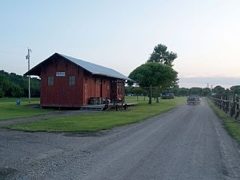Big insights from a tiny town
by Anne Johnson
World Population Day, recognized on 11 July each year, draws attention to population issues around the globe. It primarily focuses on the toll unsustainable growth can take on people and the environment—an urgent concern, to be sure. What about the other end of the spectrum? While a large and growing number of the world’s 7.8 billion people live in cities, rural areas face population issues of a different sort.
In the first of our Community Insights series, we’re taking a look at Paxico, Kansas (population: 220). A Thriving Earth Exchange project is in the works for Paxico, but that’s not the focus of this article. Instead, our goal with Community Insights is simply to elevate community voices and surface the unique perspectives, strengths, and challenges of communities today. We hope you enjoy it.
We spoke with Deanna (Ebert) Pierson, a Paxico resident who provides professional and technical direction for asset-based economic development in rural communities currently focused on her native Pottawatomie and Wabaunsee counties in Kansas. Pierson, a fourth-generation Kansas farm daughter, can trace her roots to her great-grandfather as the first white homestead settlement in Pottawatomie county, pre-dated only by the Jesuit Mission in St. Marys.
How would you describe your community to someone who’s never been there?
Pierson: It’s just a typical small, rural town in America. It had its earliest beginnings in the westward expansion when the Homestead Act came into being and there was free land. Many of those communities are now lost and might be considered ghost towns. There is very little reference point for a city person to even understand what it’s like out in our rural community. When I lived in a large city, I lived in an apartment complex that had more people than this whole town has. But we like it. We choose to live here. My neighbors know who I am. The culture of community is here, because that’s who we are.
What do you see as unique strengths of your community?
Pierson: I think we have the best of both worlds. We can go to the city if we want to, but we really have an ideal standard of community and no fear. It’s safe. It’s very freeing. We are a community that cares about our community.
What do you see as its unique challenges or struggles?
Pierson: We fall through the cracks. There are all these organizations and numerous grants [yet] folks in rural communities do not have the knowledge or the expertise to know how to find those resources or find a grant writer that can capture their passion. Our entire city budget is $377,000. We have no access to increased capital. We’re in a flood zone, which means you need flood insurance, and that [creates] this huge economic development puzzle that requires an overall strategic plan. The challenge is that we tend to give up and make do with what we have, because we don’t have the expertise [to] find the money or the scientist or the grant writer, or even get the ear of our Congressman.
What do you think people would be surprised to learn about your community?
Pierson: [People in rural and urban areas] are more alike than we are different. When I moved to Nashville, although I was a rural person and had never lived in a large city, I could strike up conversations with people and find that we were very similar. We really have the same human emotions, the same chemical makeup. We just have different cultural backgrounds, which is what makes us work.
What do you hope your community will be like in 20 years?
Pierson: We are strategically located for asset-based economic development. If we were to find the investment dollars to build a hotel and a fuel center, we could support the regional food distribution drivers that come through. [With sales tax coming in] we could have nice city streets and sidewalks, and overcome this flooding issue. Then our empty lots could have houses built on them, and that would give us a budget that would be self-sustaining instead of just relying on raising taxes. We’re probably never going to be over 300-400 [people], but even just a small increase in population increases our capability to provide services. There will be some population growth, but it will be good growth because it will be a gradual increase.

